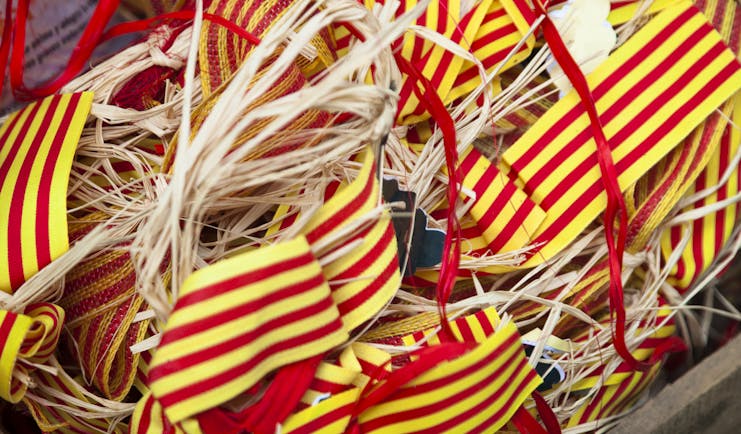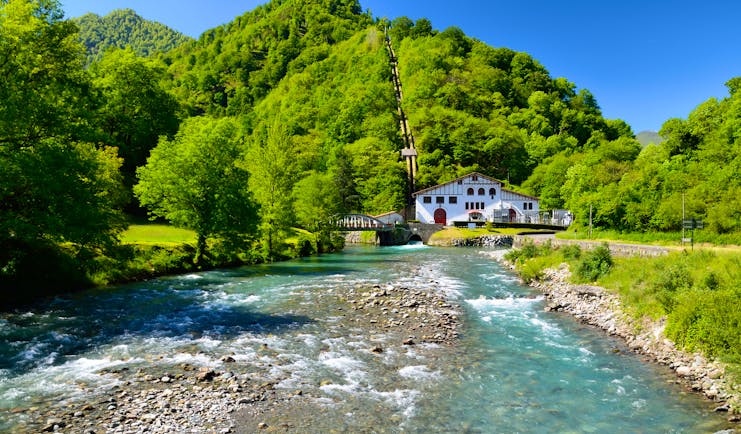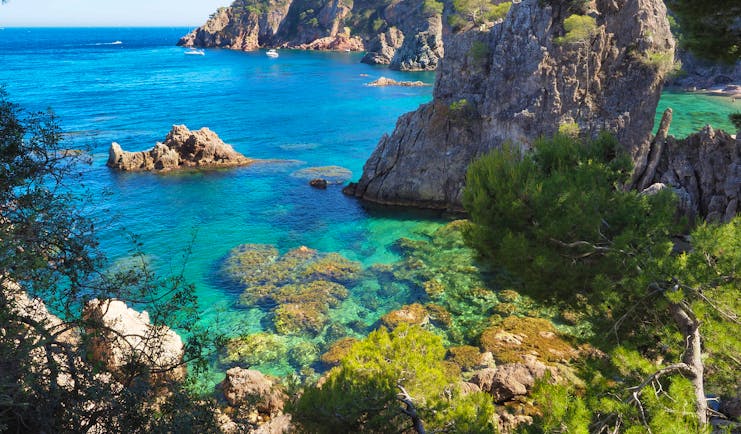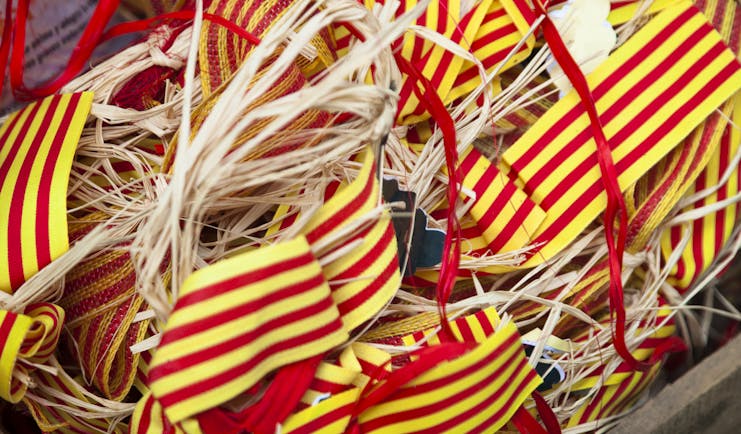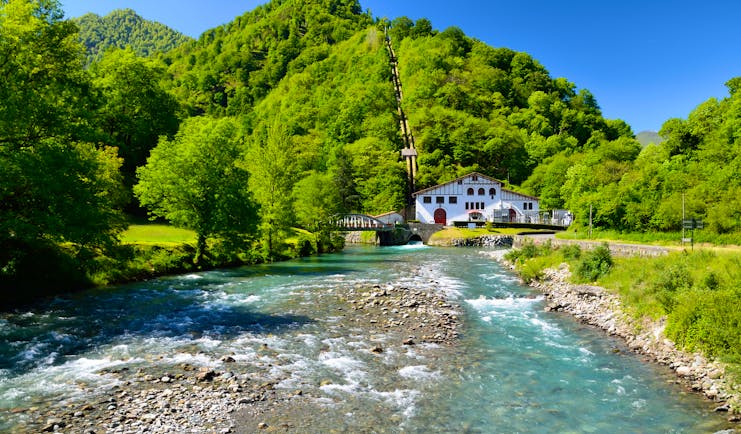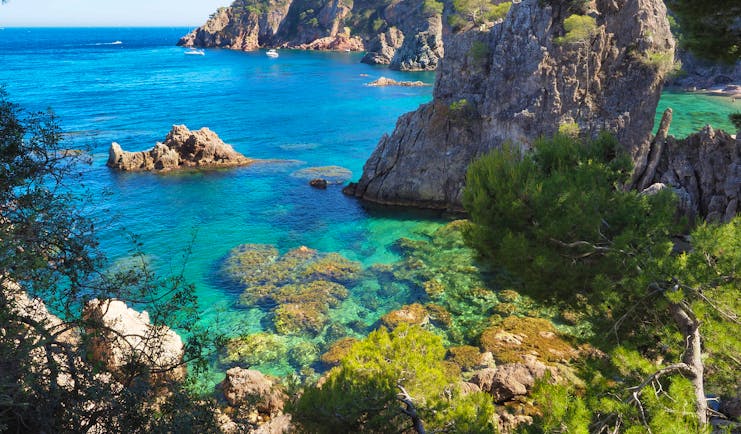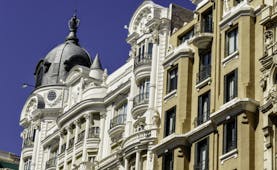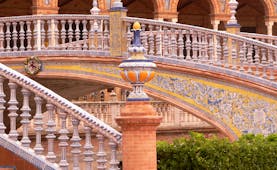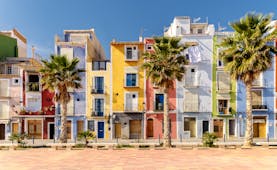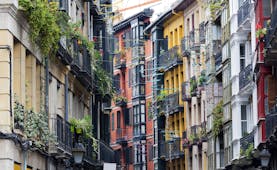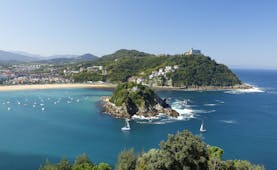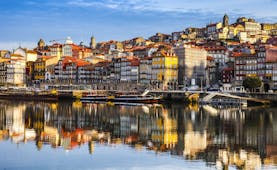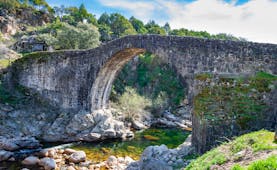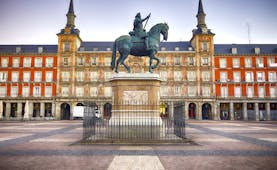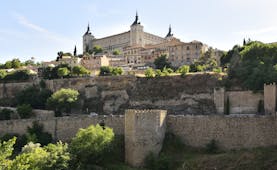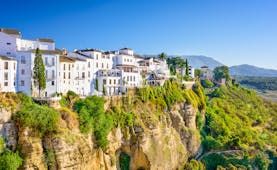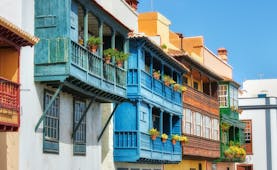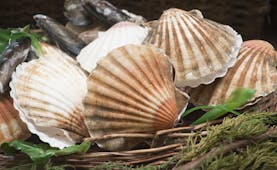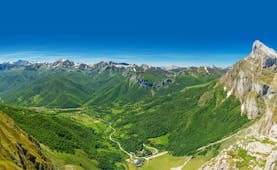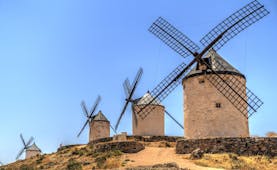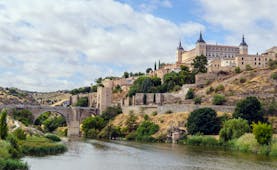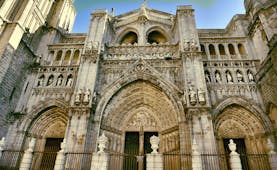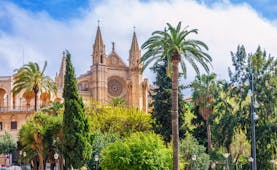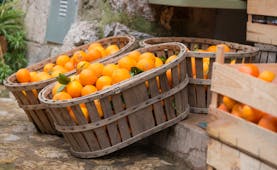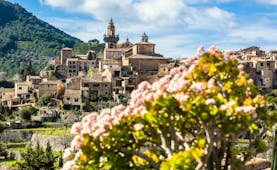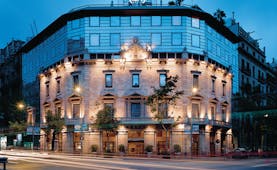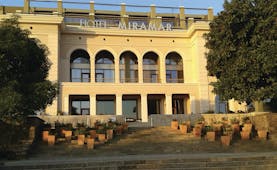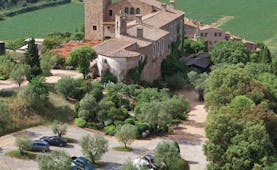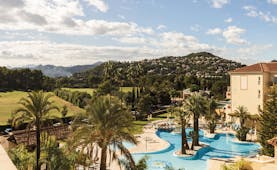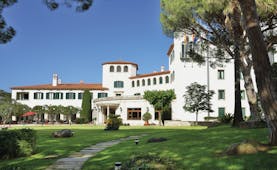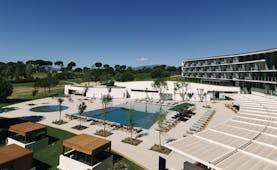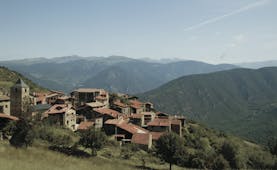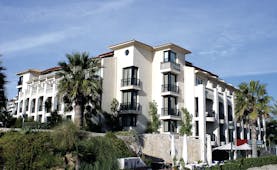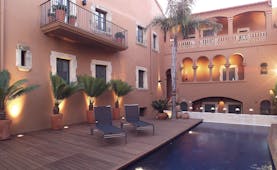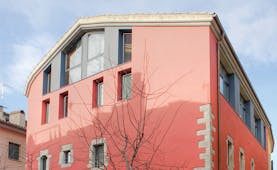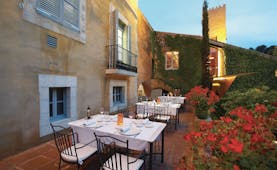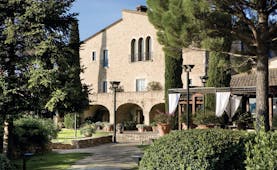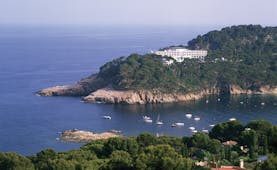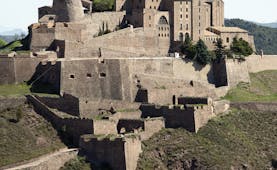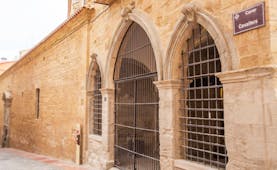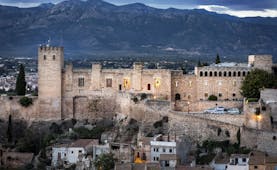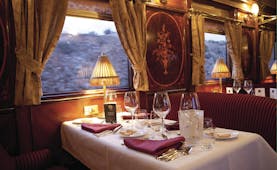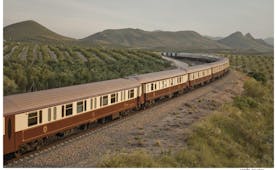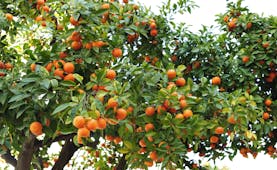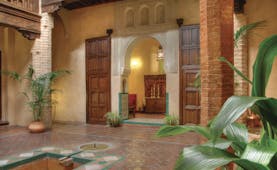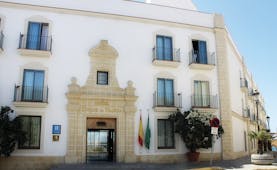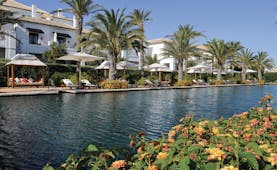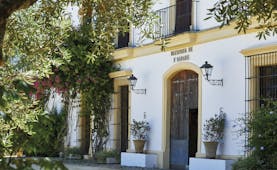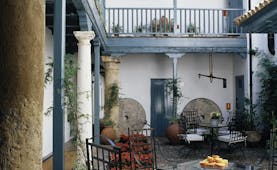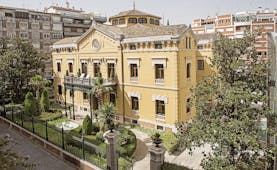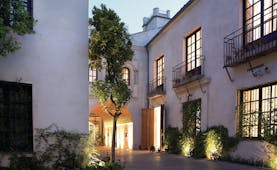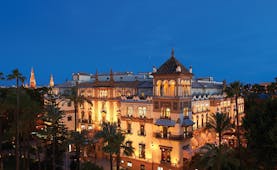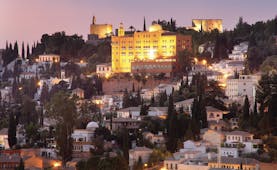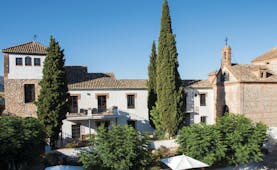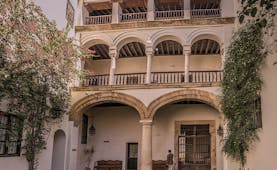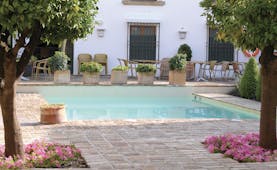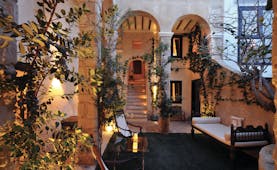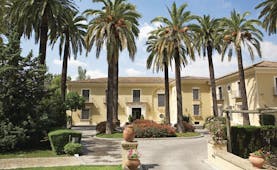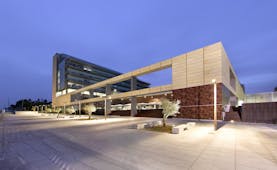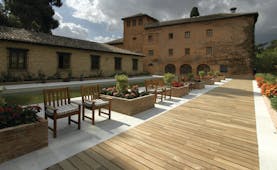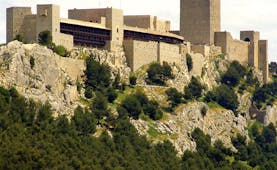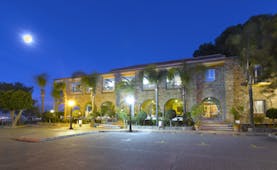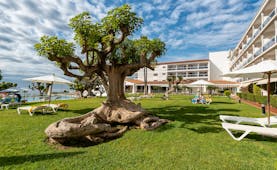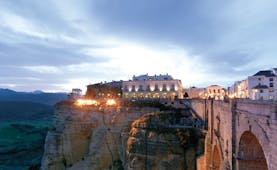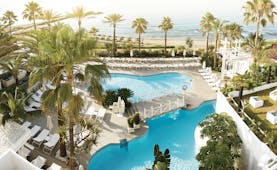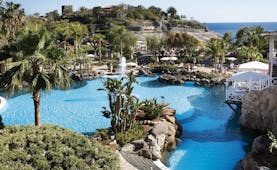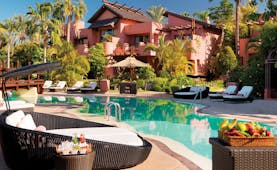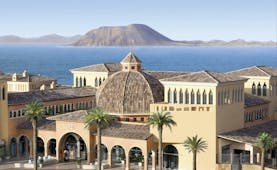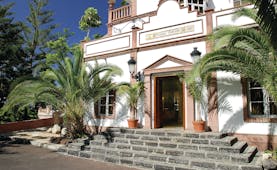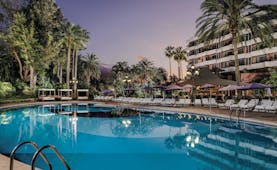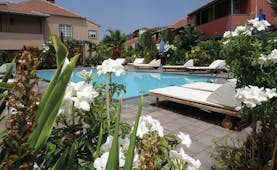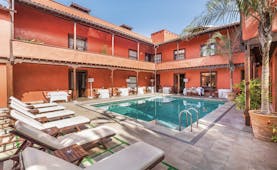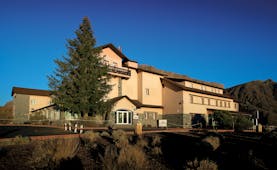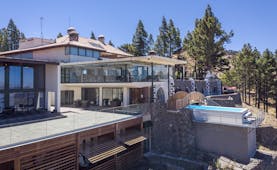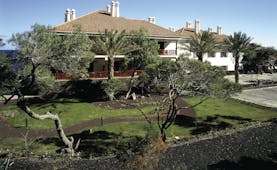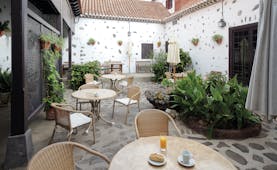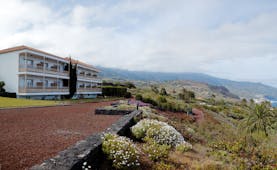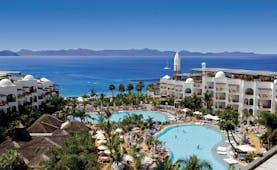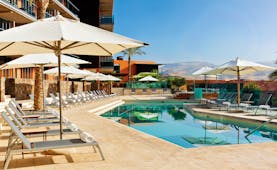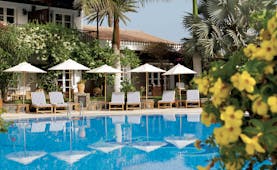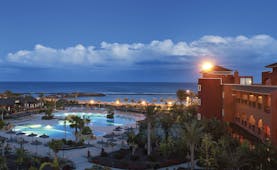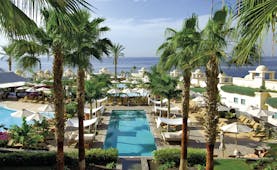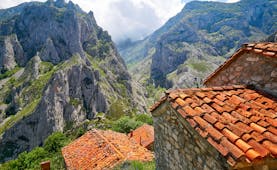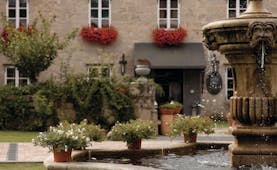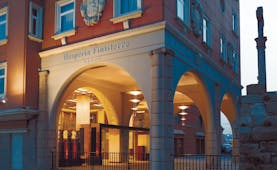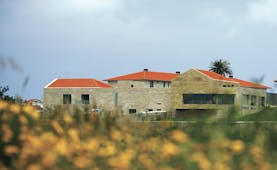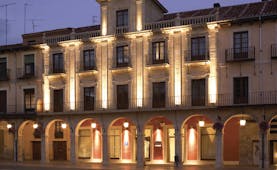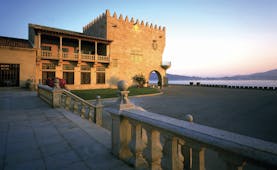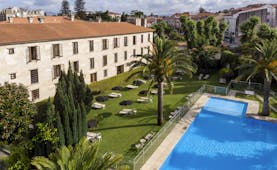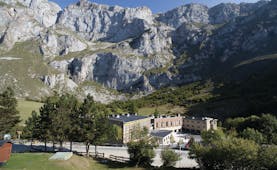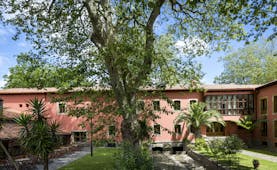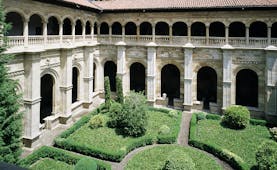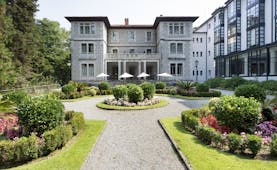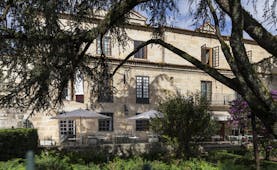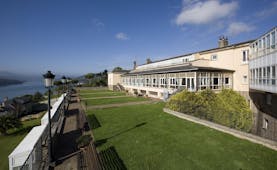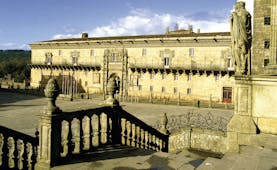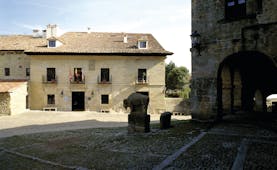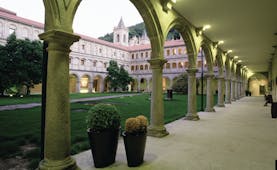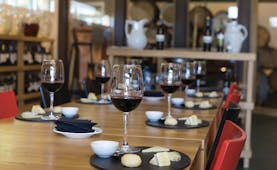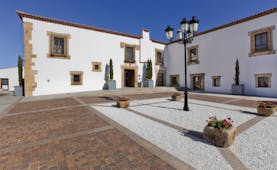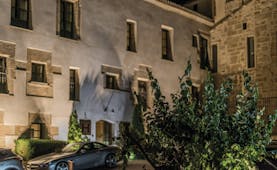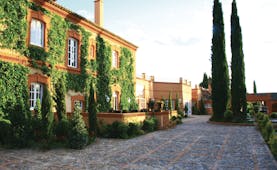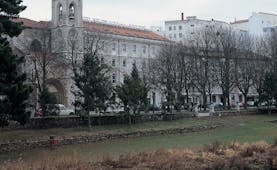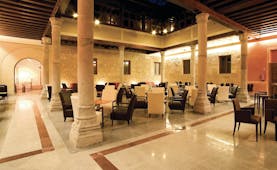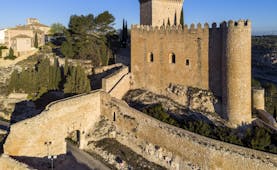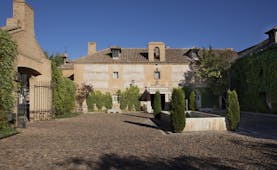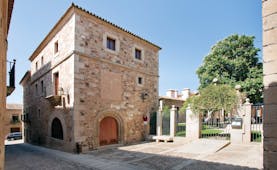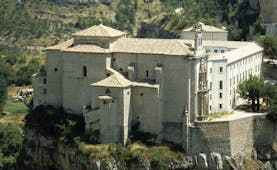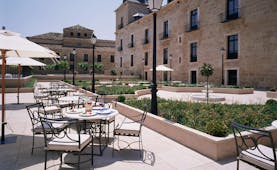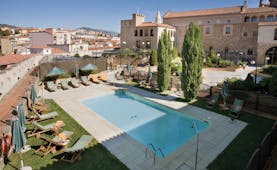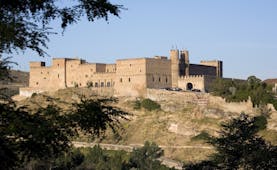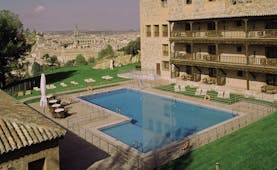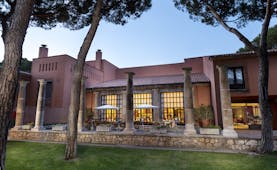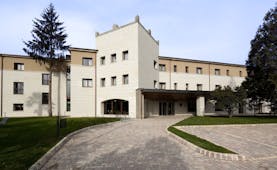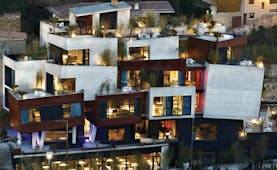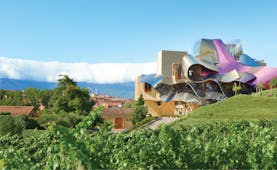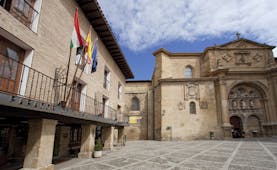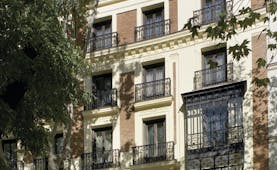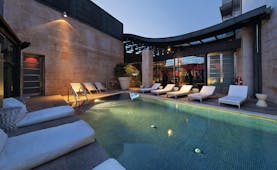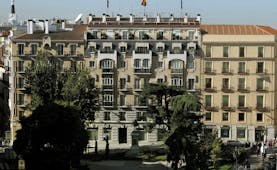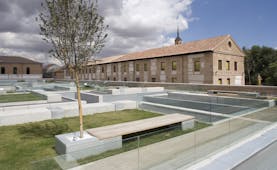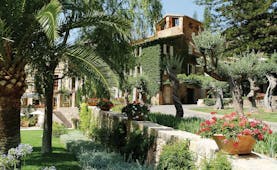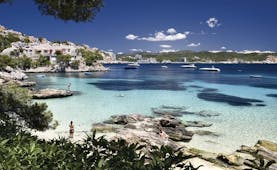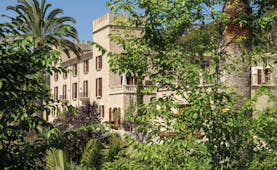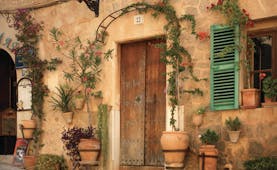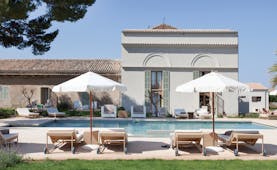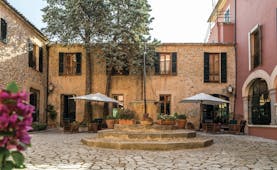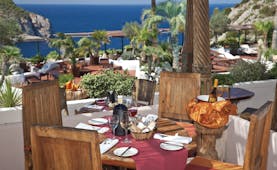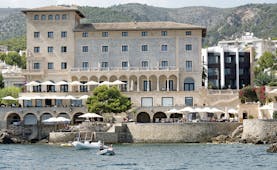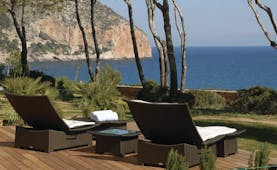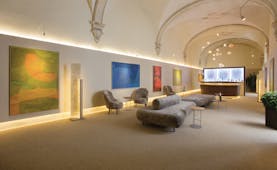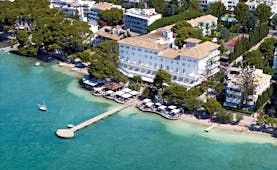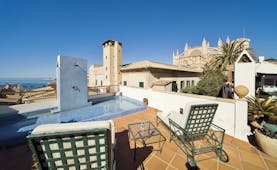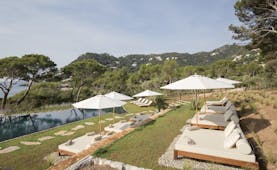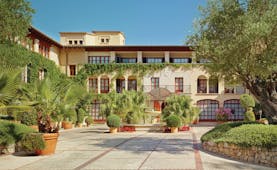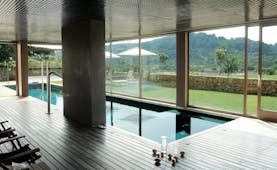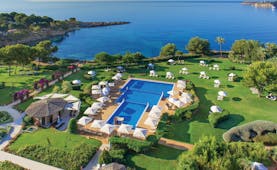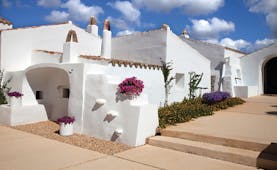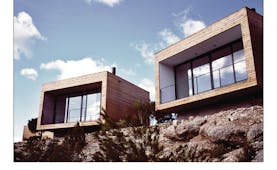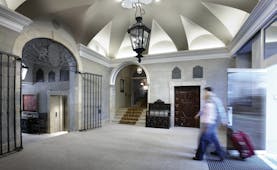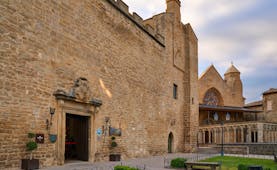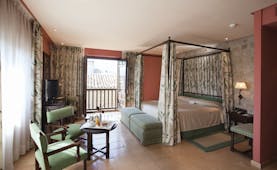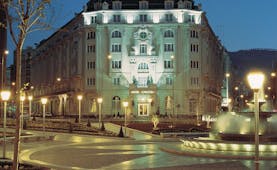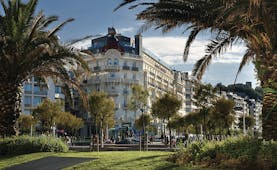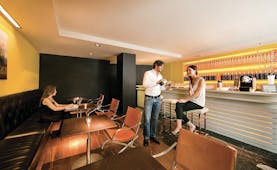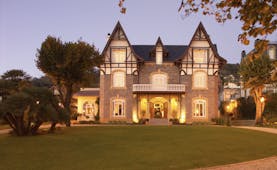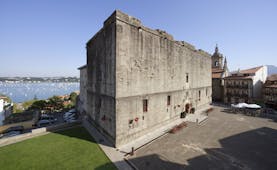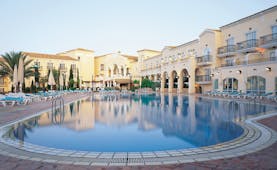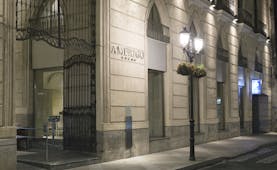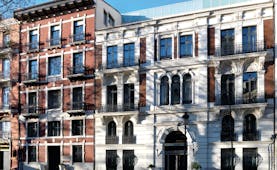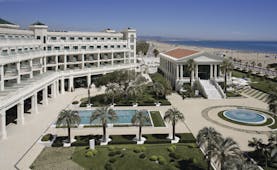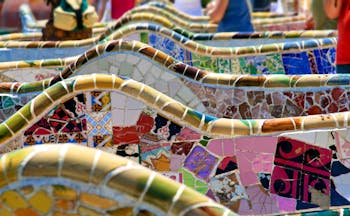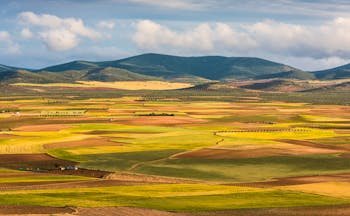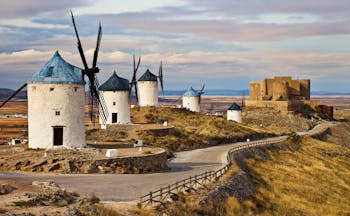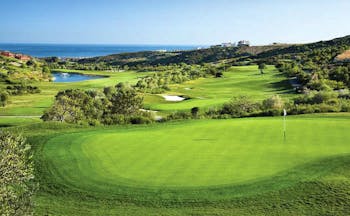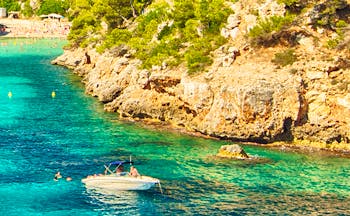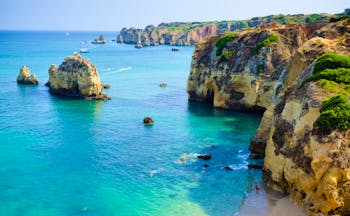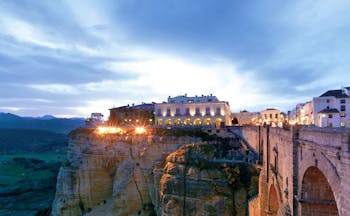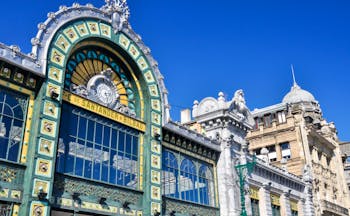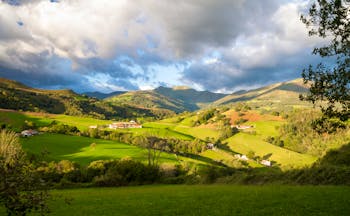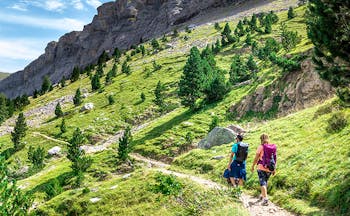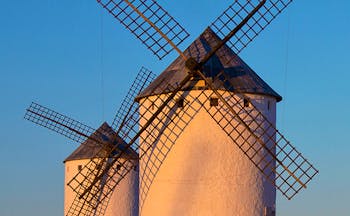Luxury fly-drive touring holiday of Catalonia, discovering the diversity of Catalan cities, mountains and coast
This 8-night fly-drive Catalan discovery touring holiday is the ideal way to explore the differences of Catalonia, featuring city, mountains and coast. Begin this luxury touring holiday with your arrival in Barcelona. Spend two nights in this bustling, dynamic city, exploring its many-faceted quarters, and marvelling at the wealth of astounding architecture and culture. From here, drive north to El Castell de Ciutat in La Seu d’Urgell, situated amidst the rugged scenery of the Pyrenees, and stay for three luxurious nights. Take in the magnificent panoramas whilst traversing the mountains, or absorb the sublime atmosphere of the mountains from the poolside. Next, this tour takes you to the Costa Brava. Stay three nights in S’Agaro on a small peninsula looking over the Bay of Sant Pol, with striking seaside views. Spend your days enjoying the sea air, snorkelling off the rocky coast, and relaxing on golden beaches. Within easy reach of many other seaside villages, as well as the cultural cities of Girona and Figueres, you are perfectly placed to soak up the last of the cultural delights and variety of Catalonia. Finish your tour by returning to Barcelona for your flight back to the UK.
Highlights
Barcelona • Montjuïc • Museu Picasso • Gaudi’s Parc Güell • Monastery of Montserrat • Cardona • La Seu d’Urgell • Vic • Costa Brava • Sa Conca • Girona • Figueres
Day by day
Start your Catalan holiday by flying into Barcelona. Take a taxi to the five-star Grand Hotel Central, a sophisticated property located in Barcelona's Gothic quarter just a short distance from the cathedral, where you will stay for two nights. This stop on your luxury touring holiday provides just enough time to explore Barcelona’s several diverse quarters.
Begin with Montjuïc, famed for its castle, the tallest landmark in Barcelona. Perhaps also visit the Museu Nacional d’Art de Catalunya, featuring a vast collection of Romanesque and Gothic art. Also of interest is the minimalist white building of the Fundació Joan Miró, the landscaped gardens, and the Poble Espanyol. The Gothic quarter might be next on your list. This part of the city is characterised by its maze-like medieval streets, and the beautifully designed buildings. Some of the best shops, and the most beautiful palaces, churches, and squares are nestled into these streets. In La Ribera, the former palaces of merchants have been converted into revered museums, such as the Museu Picasso. This quarter is also home to the fantastically mesmerising interior of the modernist Palau de la Música Catalana. You may also wish to visit the historic Santa Maria del Mar, with its cavernous interior, ochre stone walls, and pillars. El Raval was once one of the most prolific red-light districts in the Mediterranean; but now, this notorious history is almost lost beside the beauty of the Romanesque monastery of Sant Pau, and Antoni Gaudi’s enchanting Palau Güell. The Barcelona coast is divided into six Blue Flag beaches and serves some of the best seafood in the city – besides the oysters and street food at La Boqueria market on Las Ramblas. This is the perfect place to pass a lunchtime or early afternoon before taking in more of the sights. Barcelona’s most famous quarter is perhaps the Eixample. Riddled with eclectic Modernista architecture, its streets are imprinted with the style of architects such as Antoni Gaudi. For a sweeping view of the best works of this movement, wander down the Passeig de Grácia, and see the Manzana de la Discòrdia, Le Pedrera, and, of course, the magnificent Sagrada Familia. Gaudi’s most famous and best-loved work takes the form of Barcelona’s temple. Its modified gothic architecture fractures the skyline in a series of elegant spires, while inside the shape of the Sagrada still revolves around the image of the traditional Latin cross. Contrary to popular belief, however, this temple is still inferior in height to the Montjuïc Castle, and therefore visiting both sites is essential to any trip to Barcelona. The Zona Alta, which sits further away from Barcelona’s centre, is home to Gaudi’s Parc Güell, and Horta’s labyrinth, and is therefore ideal for passing an afternoon outside. Complete your stay in Barcelona on Las Ramblas, taking in the lively atmosphere, the music of the buskers, enjoying the work of the living statues, sampling the delicacies of the stalls, and seeking the perfect souvenir in the shops.
Pick up your hire-car and drive northwards to the town of La Seu d’Urgell in the Pyrenees, a journey of just over 100 miles. Your route takes you near the Monastery of Montserrat, a religious complex in a spectacular setting atop craggy mountains with chapels, hermits’ caves and numerous nature trails. You could also break the journey in Cardona, a picturesque town full of Romanesque and Gothic architecture dominated by a 9th century fortress. Arrive at your hotel, El Castell de Ciutat, a contemporary alpine lodge in a rural location with astounding mountain views, where you will be staying for three nights.
Spend your time exploring the nearby nature reserves by bicycle or on foot, take part in activities such as horse-riding, canoeing, and mountain biking; venture over the border to the quaint hillside village of Fontaneda in the Principality of Andorra, or simply relax and enjoy the outstanding mountain views from the comfort of the hotel. In the centre of the village of La Seu d’Urgell, sits the 11th century Catedral de Santa Maria. This austere, but dramatic, cathedral is a testament to the Italian influence on the Catalan Romanesque style. Its tall central chamber is quite severe, lacking in natural light; yet, this serves to make the circular window that hangs above the altar at the end of the hall all the more affecting. Corridors and the cloister border a beautiful courtyarded garden. Also within the cathedral is a Diocesan Museum, which displays a collection of mediaeval paintings and sculptures that pertain to this region of Spain. La Seu d’Urgell has its own Sagrada Familia, though its charming exterior bears little resemblance to the temple in Barcelona. You may also wish to wander around the cloister of the Església de Sant Miquel, a church that continues the austerity of the cathedral, with tall curved walls and brooding interiors. One part of the church, however, still bears evidence of a once more colourful building. One of the greatest pleasures of spending time in La Seu d’Urgell might be a leisurely stroll through the historic quarter, taking in the picturesque beauty of the arcaded streets and old mansions, stopping off on your way at the convent of Sant Domingo.
Drive for around three hours south east to the Costa Brava, travelling via the quintessentially Catalan town of Vic, where an excellent market is held in the main square. Head to the Hostal de la Gavina, an elegant hotel in an impressive seaside location, where you will spend three nights. Located on a peninsula the hotel looks out over sandy cove and rugged cliffs beyond, a haven of relaxation with plenty of activities and excursions nearby.
Visitors can indulge in the spa, enjoy a game of tennis, relax on the sandy beaches or by one of the two pools, partake in numerous water sports, including windsurfing and water-skiing, hire a boat to explore the coastline, or discover the local area by car. The beaches, coves, and rock pools are what gives this area most of its charm. During the day guests may choose to explore the Camino de Ronda which leads down to Sa Conca beach. Alternatively, recline on the beach, with the serenity of the Costa Brava as your backdrop, and with the rush of the lapping sea to help you relax. Guests can enjoy access to the St Pol Beach Club. Just a short drive inland is Girona, a cosmopolitan and characterful city with a well-preserved mediaeval Jewish quarter as well as Islamic and Christian monuments. Further north is Figueres, the town which is known for its popular and eccentrically designed museum dedicated to the work of Salvador Dalí.
Drive for about one and a half hours back to Barcelona, where you will return your hire-car and catch your flight back to the UK.
I thoroughly enjoyed my week’s holiday in San Sebastián and Bilbao, especially Villa Soro, the room, service and food were brilliant.Ms I, June 2022
Holiday price guide Prices from £2,685 per person based on two people sharing a double or twin room.
Holiday Code SNFD03
Call us on 01392 441245
Luxury fly-drive touring holiday of Catalonia, discovering the diversity of Catalan cities, mountains and coast
Start your Catalan holiday by flying into Barcelona. Take a taxi to the five-star Grand Hotel Central, a sophisticated property located in Barcelona's Gothic quarter just a short distance from the cathedral, where you will stay for two nights. This stop on your luxury touring holiday provides just enough time to explore Barcelona’s several diverse quarters.
Begin with Montjuïc, famed for its castle, the tallest landmark in Barcelona. Perhaps also visit the Museu Nacional d’Art de Catalunya, featuring a vast collection of Romanesque and Gothic art. Also of interest is the minimalist white building of the Fundació Joan Miró, the landscaped gardens, and the Poble Espanyol. The Gothic quarter might be next on your list. This part of the city is characterised by its maze-like medieval streets, and the beautifully designed buildings. Some of the best shops, and the most beautiful palaces, churches, and squares are nestled into these streets. In La Ribera, the former palaces of merchants have been converted into revered museums, such as the Museu Picasso. This quarter is also home to the fantastically mesmerising interior of the modernist Palau de la Música Catalana. You may also wish to visit the historic Santa Maria del Mar, with its cavernous interior, ochre stone walls, and pillars. El Raval was once one of the most prolific red-light districts in the Mediterranean; but now, this notorious history is almost lost beside the beauty of the Romanesque monastery of Sant Pau, and Antoni Gaudi’s enchanting Palau Güell. The Barcelona coast is divided into six Blue Flag beaches and serves some of the best seafood in the city – besides the oysters and street food at La Boqueria market on Las Ramblas. This is the perfect place to pass a lunchtime or early afternoon before taking in more of the sights. Barcelona’s most famous quarter is perhaps the Eixample. Riddled with eclectic Modernista architecture, its streets are imprinted with the style of architects such as Antoni Gaudi. For a sweeping view of the best works of this movement, wander down the Passeig de Grácia, and see the Manzana de la Discòrdia, Le Pedrera, and, of course, the magnificent Sagrada Familia. Gaudi’s most famous and best-loved work takes the form of Barcelona’s temple. Its modified gothic architecture fractures the skyline in a series of elegant spires, while inside the shape of the Sagrada still revolves around the image of the traditional Latin cross. Contrary to popular belief, however, this temple is still inferior in height to the Montjuïc Castle, and therefore visiting both sites is essential to any trip to Barcelona. The Zona Alta, which sits further away from Barcelona’s centre, is home to Gaudi’s Parc Güell, and Horta’s labyrinth, and is therefore ideal for passing an afternoon outside. Complete your stay in Barcelona on Las Ramblas, taking in the lively atmosphere, the music of the buskers, enjoying the work of the living statues, sampling the delicacies of the stalls, and seeking the perfect souvenir in the shops.
Pick up your hire-car and drive northwards to the town of La Seu d’Urgell in the Pyrenees, a journey of just over 100 miles. Your route takes you near the Monastery of Montserrat, a religious complex in a spectacular setting atop craggy mountains with chapels, hermits’ caves and numerous nature trails. You could also break the journey in Cardona, a picturesque town full of Romanesque and Gothic architecture dominated by a 9th century fortress. Arrive at your hotel, El Castell de Ciutat, a contemporary alpine lodge in a rural location with astounding mountain views, where you will be staying for three nights.
Spend your time exploring the nearby nature reserves by bicycle or on foot, take part in activities such as horse-riding, canoeing, and mountain biking; venture over the border to the quaint hillside village of Fontaneda in the Principality of Andorra, or simply relax and enjoy the outstanding mountain views from the comfort of the hotel. In the centre of the village of La Seu d’Urgell, sits the 11th century Catedral de Santa Maria. This austere, but dramatic, cathedral is a testament to the Italian influence on the Catalan Romanesque style. Its tall central chamber is quite severe, lacking in natural light; yet, this serves to make the circular window that hangs above the altar at the end of the hall all the more affecting. Corridors and the cloister border a beautiful courtyarded garden. Also within the cathedral is a Diocesan Museum, which displays a collection of mediaeval paintings and sculptures that pertain to this region of Spain. La Seu d’Urgell has its own Sagrada Familia, though its charming exterior bears little resemblance to the temple in Barcelona. You may also wish to wander around the cloister of the Església de Sant Miquel, a church that continues the austerity of the cathedral, with tall curved walls and brooding interiors. One part of the church, however, still bears evidence of a once more colourful building. One of the greatest pleasures of spending time in La Seu d’Urgell might be a leisurely stroll through the historic quarter, taking in the picturesque beauty of the arcaded streets and old mansions, stopping off on your way at the convent of Sant Domingo.
Drive for around three hours south east to the Costa Brava, travelling via the quintessentially Catalan town of Vic, where an excellent market is held in the main square. Head to the Hostal de la Gavina, an elegant hotel in an impressive seaside location, where you will spend three nights. Located on a peninsula the hotel looks out over sandy cove and rugged cliffs beyond, a haven of relaxation with plenty of activities and excursions nearby.
Visitors can indulge in the spa, enjoy a game of tennis, relax on the sandy beaches or by one of the two pools, partake in numerous water sports, including windsurfing and water-skiing, hire a boat to explore the coastline, or discover the local area by car. The beaches, coves, and rock pools are what gives this area most of its charm. During the day guests may choose to explore the Camino de Ronda which leads down to Sa Conca beach. Alternatively, recline on the beach, with the serenity of the Costa Brava as your backdrop, and with the rush of the lapping sea to help you relax. Guests can enjoy access to the St Pol Beach Club. Just a short drive inland is Girona, a cosmopolitan and characterful city with a well-preserved mediaeval Jewish quarter as well as Islamic and Christian monuments. Further north is Figueres, the town which is known for its popular and eccentrically designed museum dedicated to the work of Salvador Dalí.
Drive for about one and a half hours back to Barcelona, where you will return your hire-car and catch your flight back to the UK.
I thoroughly enjoyed my week’s holiday in San Sebastián and Bilbao, especially Villa Soro, the room, service and food were brilliant.Ms I, June 2022
Holiday price guide Prices from £2,685 per person based on two people sharing a double or twin room.
Holiday Code SNFD03
Our prices include
● Scheduled flights with British Airways, from London Heathrow to Barcelona El Prat return, economy
● Hire of a Group C car for seven days
● 2 nights’ bed and breakfast in a Standard double room at the Grand Hotel Central in Barcelona
● 3 nights’ bed and breakfast in a Standard double room at the El Castell de Ciutat in La Seu d’Urgell
● 3 nights’ bed and breakfast in a Standard double room at the Hostal de la Gavina in S'Agaro
● Parking available at all hotels
● Concierge service and Expressions Holidays regional helpful hints
Our prices do not include
● Early check-in or late check-out at any hotels (although we can arrange this on request at additional cost)
● Any other services not mentioned above, such as transfers and meals except breakfast at hotels
● Personal holiday insurance. This is essential and cover should be in place from when you book the holiday.
● Local tourist tax, usually between Euros 1 and 3 per person per night, and payable locally to the hotel
● Transfers in Barcelona
Additional information
Driving times for this touring holiday
Barcelona to La Seu d’Urgell 2 hours 15 minutes
La Seu d’Urgell to S'Agaro 2 hours 40 minutes
L'Escala to Barcelona 1 hour 35 minutes
Call us on 01392 441245
Luxury fly-drive touring holiday of Catalonia, discovering the diversity of Catalan cities, mountains and coast
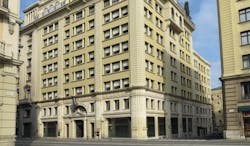
Grand Hotel Central Barcelona is a luxury 5-star hotel in an excellent city centre location. Excellent spa facilities, delicious cuisine and stunning rooftop pool make it an ideal spot to recuperate after a day enjoying the city's sights.
Standard double room
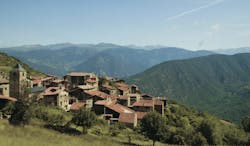
Hotel El Castell de Ciutat is a 4-star boutique hotel in a beautiful natural location. Delicious cuisine, excellent spa facilities and an excellent location for discovering the Pyrenées region afford guests a truly tranquil and restorative experience.
Standard double room
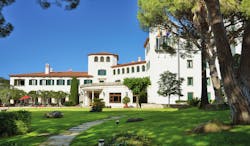
Hostal de la Gavina is a luxurious 5-star boutique hotel set beside a picturesque beach. A variety of delicious gastronomic offerings, excellent spa facilities and serene saltwater swimming pool with sea views offer guests a truly refreshing, restorative retreat.
Standard double room
Special offers
Call to make your booking and save an extra £50 per adult Call us instead of emailing us when you are thinking of booking a holiday and save an extra £50 per adult (in addition to any special offers that might be available). We want to talk to you to discuss your requirements and a phone call is usually the best way for you to define what you want enabling us to respond more accurately. We want to talk to you and you save an extra £50 per adult.
I thoroughly enjoyed my week’s holiday in San Sebastián and Bilbao, especially Villa Soro, the room, service and food were brilliant.Ms I, June 2022
Holiday price guide Prices from £2,685 per person based on two people sharing a double or twin room.
Holiday Code SNFD03
Call us on 01392 441245
Luxury fly-drive touring holiday of Catalonia, discovering the diversity of Catalan cities, mountains and coast
About Barcelona
An Expressions tailor-made holiday to Barcelona include the very best four and five star hotels in the city, all of which provide a superb base for a short city break or as the starting point for your holiday to Catalonia. First founded by the Romans, Barcelona is now a dynamic and cosmopolitan city on the Mediterranean coast which is charming and exciting all at once. The capital of Catalonia is famed for its staggering concentration of Gothic architecture as well as surreal wonders such as the Sagrada Familia, making it one of the most visited cities in Europe. Previously a relatively overlooked industrial city, Spain’s second city played host to the Olympic Games in 1992, prompting a period of extensive regeneration and leading to its reinvention as a lively holiday destination. Unique architecture, a rich culture with art galleries and museums abound, gourmet restaurants, lively bars, designer boutiques, golden beaches, parks and gardens – Barcelona has it all. An exhilarating destination for a city break, with much more to discover...
Highlights of Barcelona
There are a huge number of day trips and excursions which those on holiday in Barcelona can enjoy. These include: The Monastery of Montserrat, a religious complex in a spectacular setting atop craggy mountains with chapels, hermits’ caves and numerous nature trails, reached by a one hour train journey followed by an exhilarating cable-car ride; Wineries in towns such as Sant Sadurní d’Anoia and Vilafranca del Penedès, both around one hour away by train; Catalan towns and cities including Tarragona (a port city with fascinating Roman remains), Girona (an ancient walled city with a fascinating history), Vic (a quintessentially Catalan town with an outstanding market) and Figueres (home to the renowned Dalí Theatre-Museum), all of which can be easily reached by train or bus.
Cultural highlights of Barcelona
There are numerous places of interest that visitors should see during their luxury holiday in Barcelona: La Rambla, Spain’s most famous street which is busy at almost any time of the day or night with flower stalls, tarot readers, musicians and mime artists lining the wide walkway which is shaded by trees. The Gothic quarter, a maze of narrow streets and plazas in the old town with architecture dating back to the 14th and 15th centuries. This historic area is home to Catalonia’s government building, the town hall, a former royal palace and the imposing and intricately-decorated La Seu Cathedral, which includes a beautiful cloister. Montjuic, a fortress-topped hill in the south of the city with museums, art galleries and restaurants dotted throughout the spacious gardens. This is also the setting of the 1992 Olympic stadium, the large open space enjoys panoramic views of the city and sea, and is accessible by cable car from the port, by funicular from the base of the hill, by bus or on foot. The harbour area, where almost 3 miles of sandy beaches meet the Olympic port and the older area of Barceloneta, known for its numerous fish restaurants. Parc de la Ciutatella, a popular park with gardens, a boating lake, a zoo, several museums and the striking Catalan Parliament building. Eixample District, a vast area towards the north of the city which was built according to a grid system and is full of unique buildings which were designed in a ‘Modernista’ (Catalan Art Nouveau) style by the famous Antoni Gaudí and his contemporaries. The most famous building which was designed by Gaudí is the Sagrada Familia, an unconventional church building which is filled with symbolism but is still unfinished. Other famous works of art which feature Gaudí’s trademark curved lines, decorated chimneys, elaborate wrought iron and mosaic decorations include Parc Guell, a colourful park which is a UNESCO World Heritage Site; Casa Batlió, a house with a fascinating interior and exterior and La Pedrera, a curved apartment building.
Gastronomy in Barcelona
Cuisine in Barcelona is similar to the rest of Catalonia, taking inspiration from both nearby France and from central Spain whilst making use of local ingredients available including seafood, fresh vegetables, meat and game. Typical dishes include ‘Crema Catalana’ (a Catalan version of a Crème Brûlée), ‘Pa amb tomàquet’ (bread smeared with tomato, oil and garlic), ‘Fideuá’ (a variant of Paella which uses pasta in place of rice), ‘Zarzuela’ (a seafood stew which is made with fish, prawns, squid and mussels), ‘Escudella’ (a stew containing vegetables, meat, rice and pasta) and unusual ‘sea and mountain’ combinations which use both meat and seafood. Barcelona is home to some of Spain’s best restaurants, with gastronomic chefs creating innovative cuisine and over 20 boasting at least one Michelin star. The best fish and seafood can be found in restaurants in the Barceloneta district, or if you want to buy some local produce yourself then head to the busy La Boqueria market on La Rambla.
Climate in Barcelona
Late spring and early autumn are the best times to go on holiday to Barcelona, as the weather is warm with temperatures of around 20 degrees centigrade. Summer is often unbearably hot with some shops and restaurants closing in August as locals leave the city to get away from the heat. Winter is mild with occasional rain and average temperatures of 10 degrees but is an enjoyable time to visit as Christmas markets are held and many celebrations take place.

